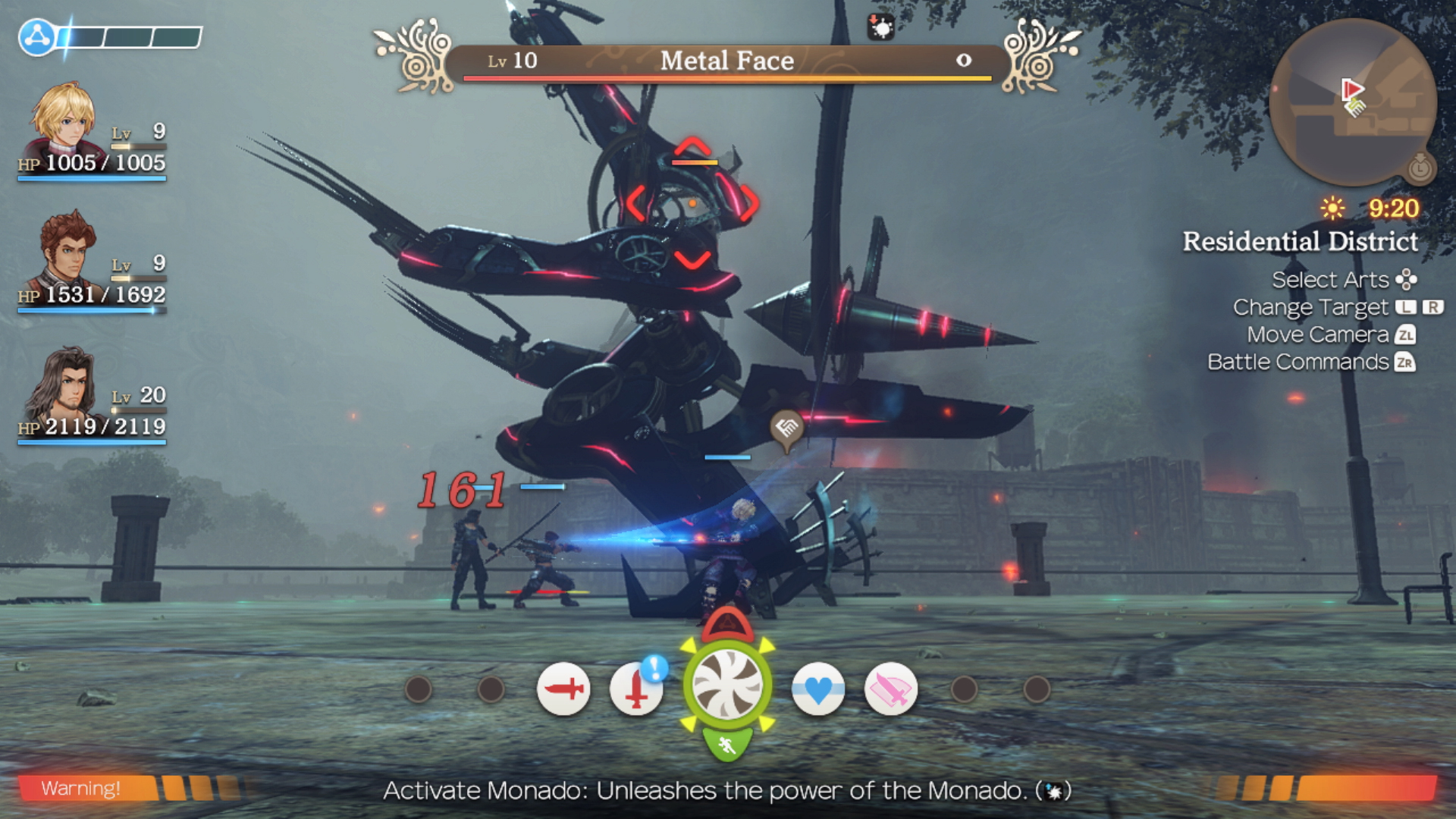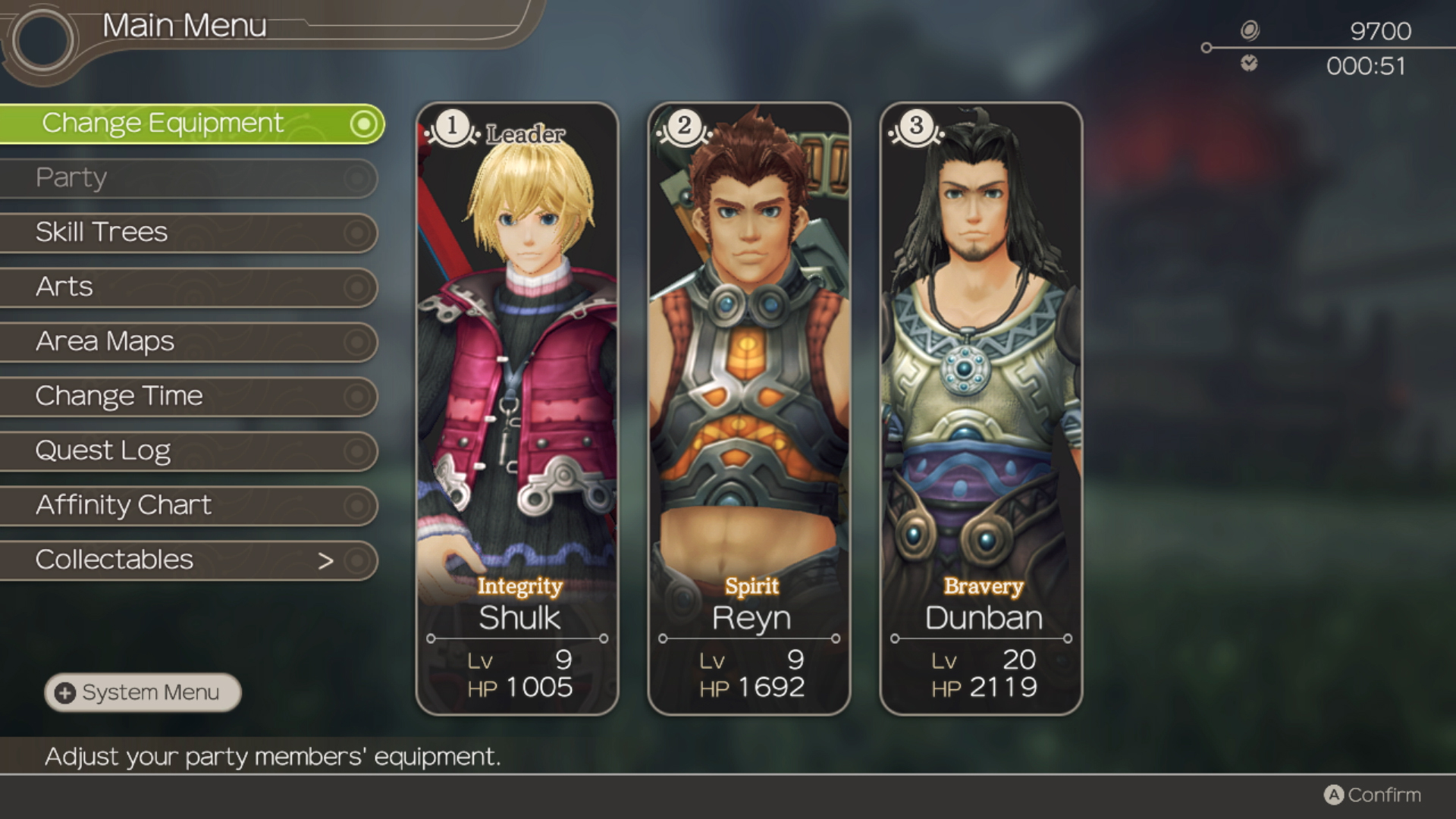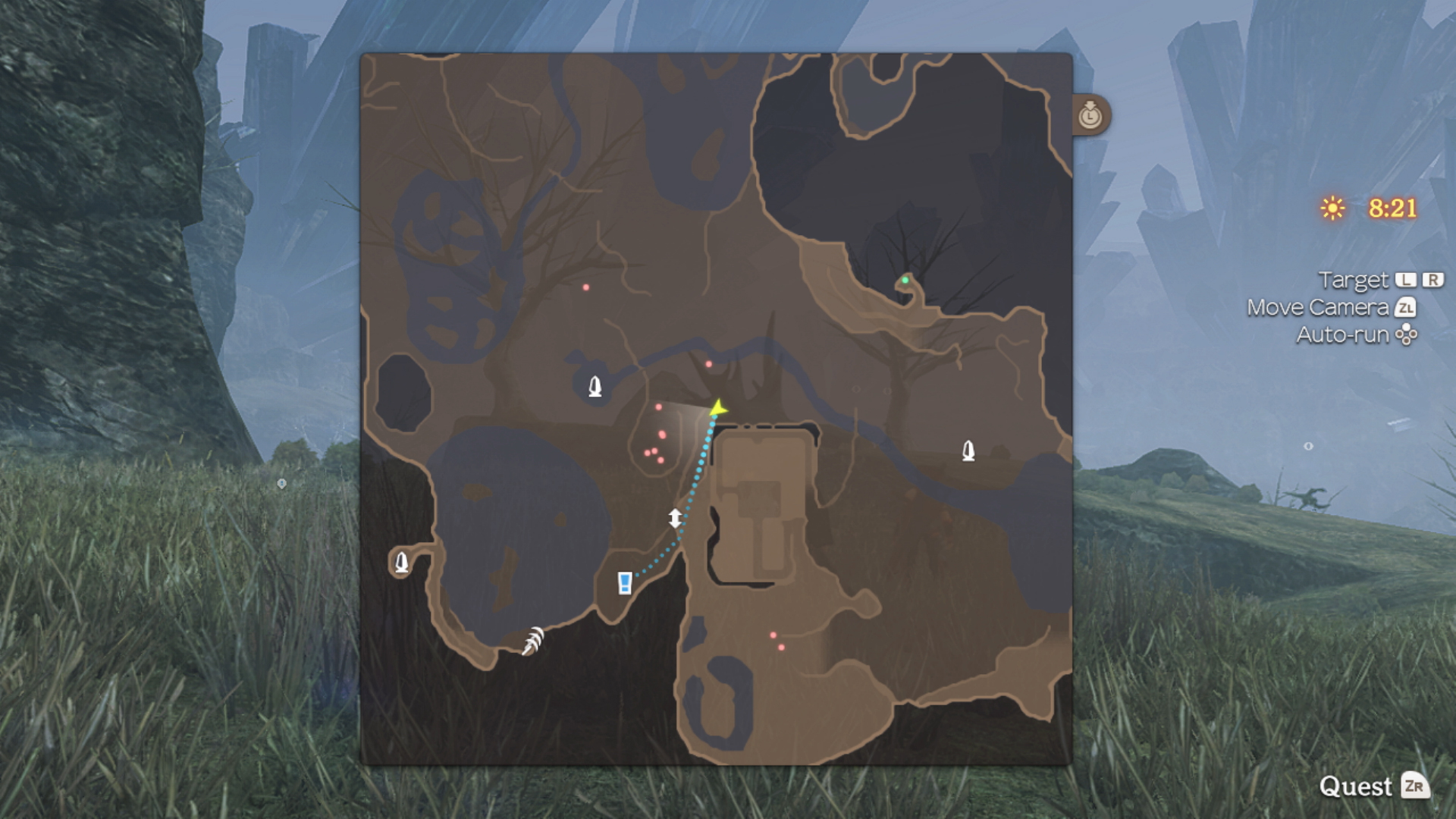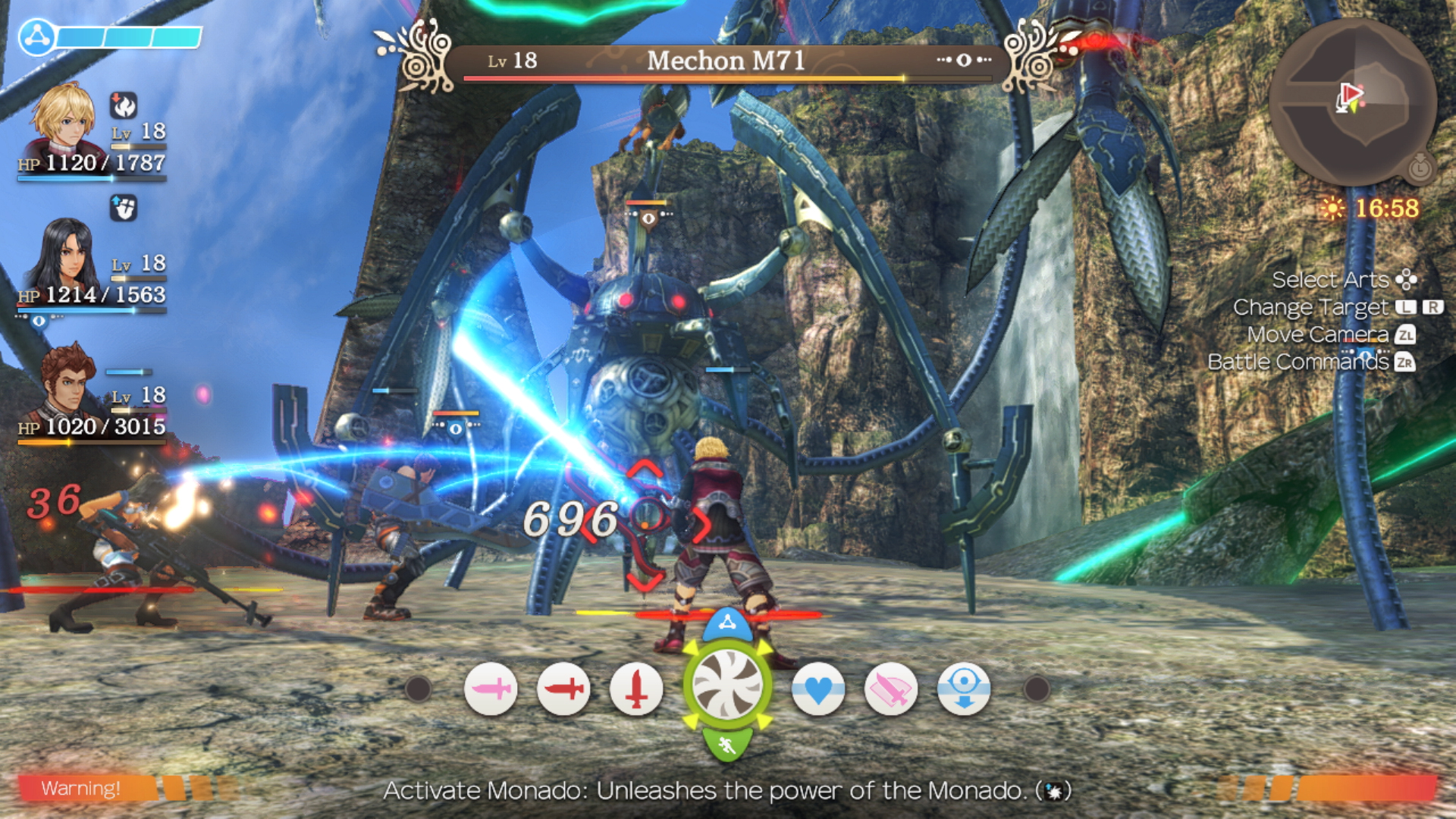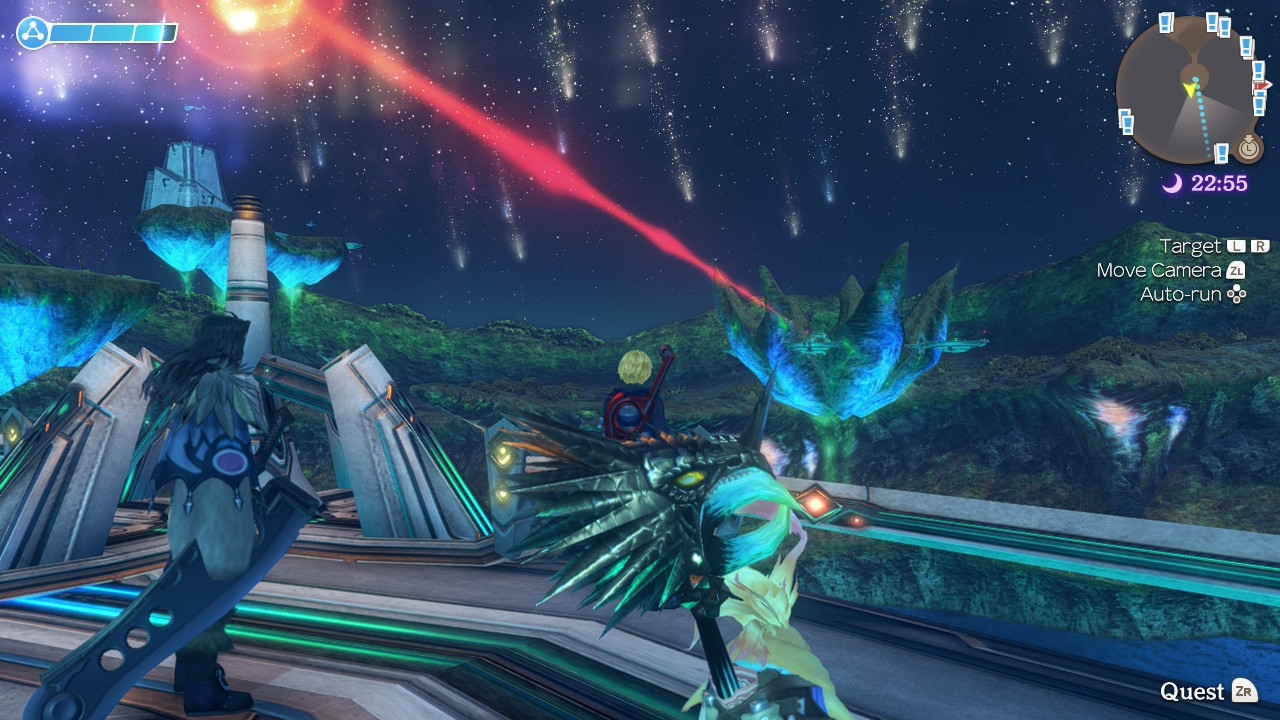Changing the future. Together. Again.
Xenoblade Chronicles: Definitive Edition is just that. We all know how it took nearly two years and the help of a massive fan campaign to get its initial U.S. release, and yet here we are—10 years later—looking at the third version of the game. Is it worth another quest across the Bionis on Nintendo Switch?
Is a Makna Brog’s ass watertight?
At its most basic, Xenoblade Chronicles tells the story of a young man named Shulk and his quest for revenge. As is the way with JRPGs, however, this is just a small part of a larger story that involves a coming armageddon. Shulk and his people live at the bottom of the Bionis, an unfathomably massive titan that lost its life in a battle with another titan, the Mechonis. Having also been killed, the Mechonis eventually evolved life of its own—robotic beings that seem to be nothing more than killing machines. During an attack on his colony, Shulk and his friends are stunned to find that one of the robots has a face and seems capable of cognitive thought. And when this Mechon kills a dear friend during battle, Shulk sets out with another to claim vengeance.
But they don’t go alone. During the battle, Shulk finds that not only can he wield a mysterious sword called the Monado, but that he alone seems capable of unlocking its full power. As you progress through the story, Shulk will discover more about the Monado, his mysterious connection with it, and the true nature of the battle between the Titans and the numerous races that now inhabit them.
Although the story doesn’t move far from the standard JRPG tropes, it’s effective mainly through the relationships Shulk cultivates. As you’d expect, his party grows during the adventure, eventually reaching seven central characters, three of which can be active for battles.
But there are many more characters you don’t control who become important to the story, and they’re all presented and used in effective ways. It helps that the voice acting is top-notch across the board. I say without hyperbole that it may be the best of any Nintendo game I’ve ever played. This is important because you’re going to be spending a lot of time with them.
A lot of time.
As you progress through the main story and reach new locations you’re going to come across NPCs who have some favors they’d like to ask. Around 450 favors if you spend the time to find them all. They’re mostly of the “find this thing for me” and “kill these beasts for me” type. Thankfully, one of the “quality of life upgrades” in the Definitive Edition is that the game now tells you where these items are. If you’re tasked with finding dark grapes, for example, your map points out their locations instead of forcing you to just run aimlessly around the environment picking up every item you see. The map now also gives you a path to your selected objective, making it much easier to navigate the complicated landscapes. These features will save you a lot of time. It took me around 120 hours to complete Xenoblade Chronicles on both the Wii and the New 3DS, and I imagine this location assistance will shave about 20 hours off this new trip.
Of course, you could just bypass the side quests, but that’s not a great idea. The battles in Xenoblade Chronicles get tough as the game moves along, and you can quickly find yourself underpowered. The quests replace mindless grinding, so you’re at least accomplishing things as you get tougher. You’re also acquiring money, better armor and weapons, and rare items that you’ll need for multiple reasons. In fact, let’s take a look at that, too.
Xenoblade Chronicles gives you game-long tasks to achieve as you play. There’s a collectopedia in which you’re rewarded for registering specific items you find during your travels. You can offer items as presents to your party members to raise the affinity level between them. This helps them to work together better in battle and unlocks heart-to-heart moments that dig deeper into their characters. There are the side quests that reward you with better items and more side quests. And finally, there’s the rebuilding of Colony 6 which, again, gives you access to more quests and items as you repopulate it and expand it structurally.
This may sound like a lot, and…well, it is. Maybe too much, which is why I spent so much time on it in this review. As great as the story is in Xenoblade Chronicles, it often comes to a crawl due to the distractions. Too often, the game will build in intensity through battles and cut-scenes, pushing you to a “We must race immediately to [X] to save [Y]!” moment that’s immediately disrupted by, “But not until we travel back to [Z] to get that Nopon his [XYZ].” If you’re not feeling it, you could lose interest in the main narrative and, therefore, the game itself.
Thankfully, Xenoblade Chronicles is aided by its rather complex battle system. Each character has access to his/her own set of arts which you can line up for battle and level up in between. The battles take place in real-time, with you controlling and positioning one character for automatic attacks.
These attacks power up the arts which you select and activate from the bottom of the screen. It’s important to manage these properly, as you’ll want characters and arts that complement each other. Not only do you want to make sure you’ve got a tank who draws attention from the enemies so your healer or buffer can remain free to patch up your main attacker, for example, you also want to set up specific arts that allow you create chain attacks that can unleash massive damage. This is especially key in Xenoblade Chronicles’ numerous boss battles. Because each character plays differently, you can take control of someone else whenever the side quest battles start to bore you. In fact, you’ll want to do this anyway because going into fights together raises affinity.
Anyone who has played a previous iteration of the game already knows this. So, what’s new in the Definitive Edition? Well, the aforementioned quality of life updates, along with numerous others. Some of these are gameplay related (being told what arts are currently most effective is a nice touch), others make the menu easier to navigate and utilize. This is especially helpful when playing in handheld mode, which is a much more enjoyable venture than playing the New 3DS version. Sadly, that system’s Amiibo support didn’t carry over.
Amongst the major selling points of the Definitive Edition are the improved graphics and soundtrack, of course. The game’s sweeping score sounds better than ever, conveying real emotion and wonder as you navigate the Bionis and Mechonis (although you can opt to go with the original version if you prefer). The intense battle music also does a great job of getting your blood pumping. And the graphics…well, you’ve seen from the screen captures how much of an improvement they are.
Xenoblade Chronicles was one of the most beautiful games made for the Wii, and although these enhanced graphics are not the best I’ve seen on the Switch, they’re still a major improvement over the original’s. The world design here is amongst the most creative and wonderfully ridiculous I’ve ever seen, and it’s never looked better. The animations and character designs, especially, are fantastic.
Then there’s the new epilogue: Future Connected. Xenoblade fans who aren’t interested in embarking on the same adventure will be happy to know they can access this new content right away. It adds about 10 to 15 hours of gameplay and introduces some new characters, although it focuses mainly on Shulk and Melia. Good to see her get some quality of life improvements, too, the poor girl.
It’s fine if you just consider it a bonus level (which it kind of is, considering it takes place on the Bionis’ shoulder, an area cut from the original release), but you’ll likely be disappointed if you’re buying the game solely for this new content.
But there’s no need to do that. Xenoblade Chronicles: Definitive Edition is an enjoyable ride no matter if you’ve played it twice before, whether you’ve only played Xenoblade Chronicles X and 2 before it, or whether this is your first time jumping into the series. Critics aren’t joking when they call it one of the greatest RPGs of all time, J or not. And even if the engrossing story does meander during the 100+ hours you’ll take to play through it, you won’t care too much because it’s just more time spent with these wonderful companions in this captivating world.
Review: Xenoblade Chronicles: Definitive Edition (Nintendo Switch)
Awesome
I have yet to play a game that needed a Definitive Edition as much as Xenoblade Chronicles, and it fully delivers. It’s a game no JRPG fan should miss, and a version that no JRPG fan should bypass for a second or third play-through.


